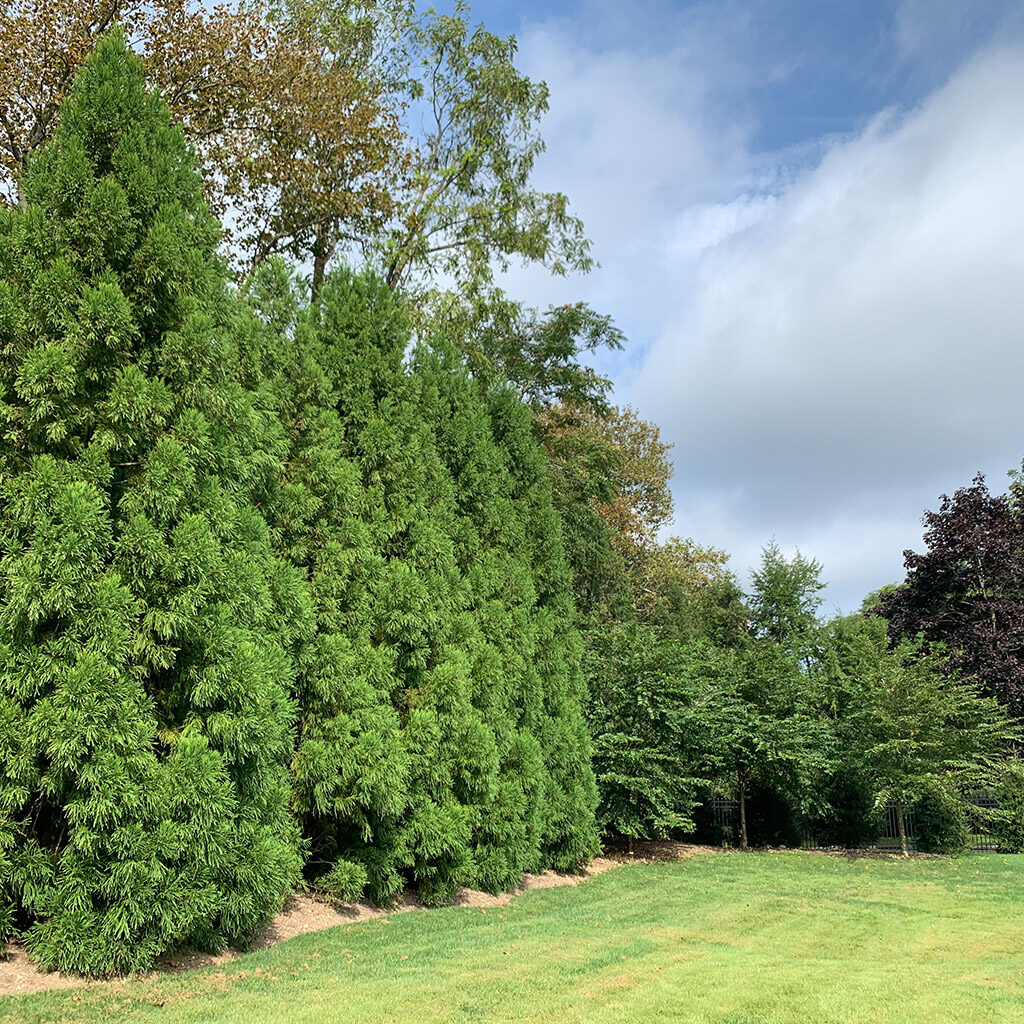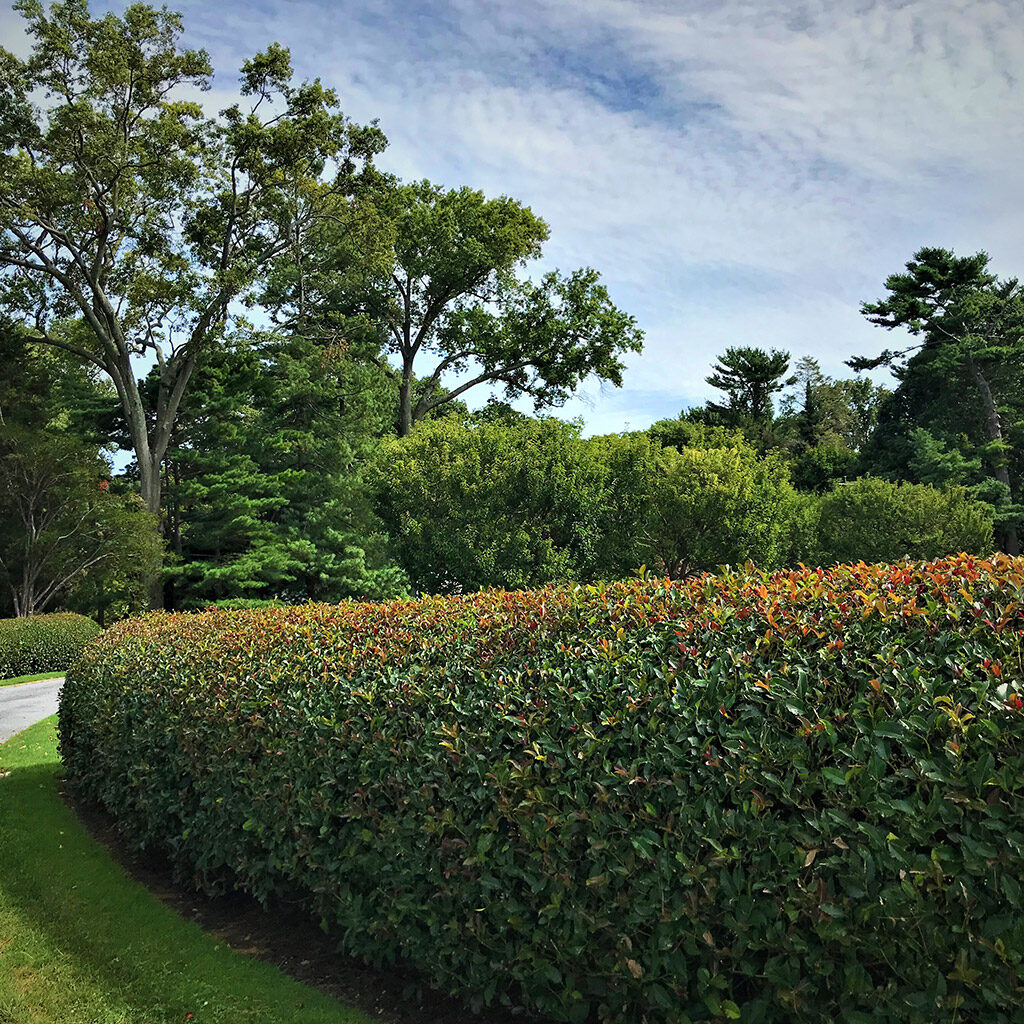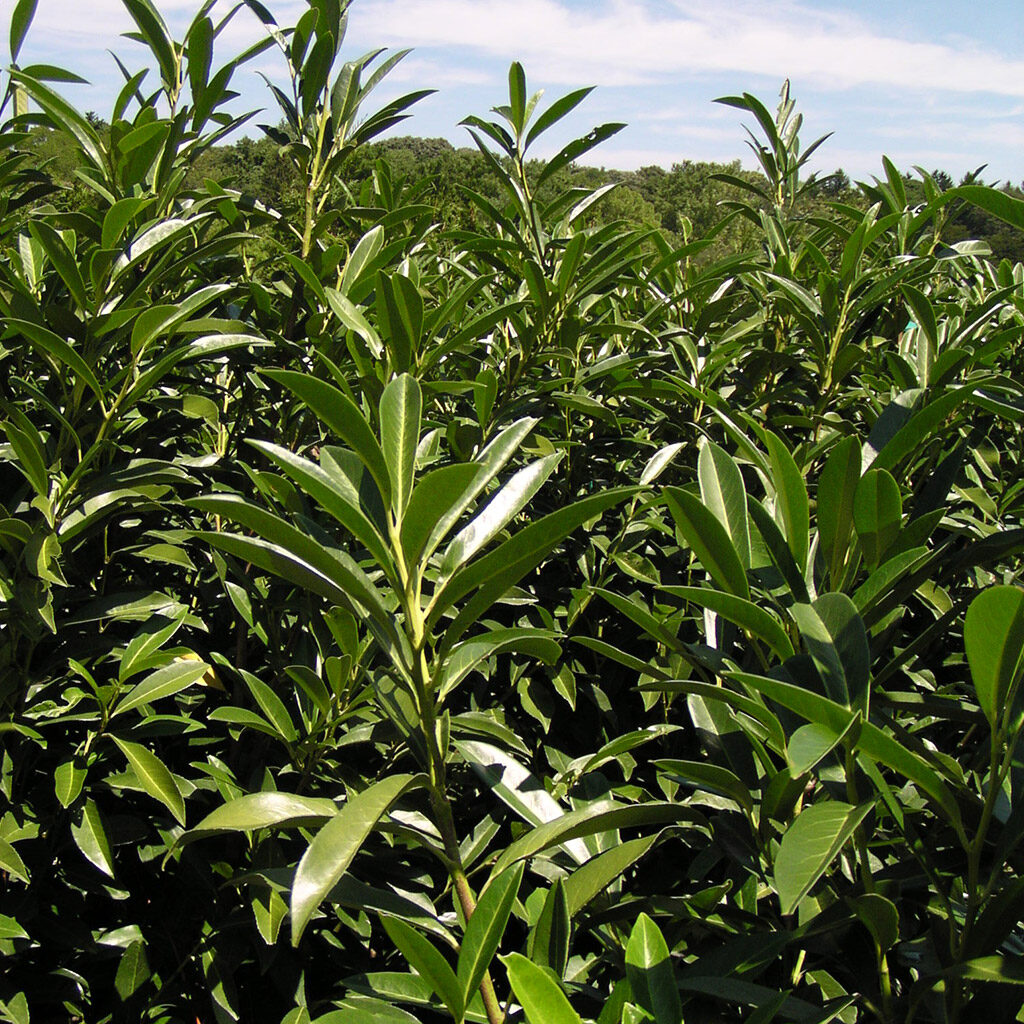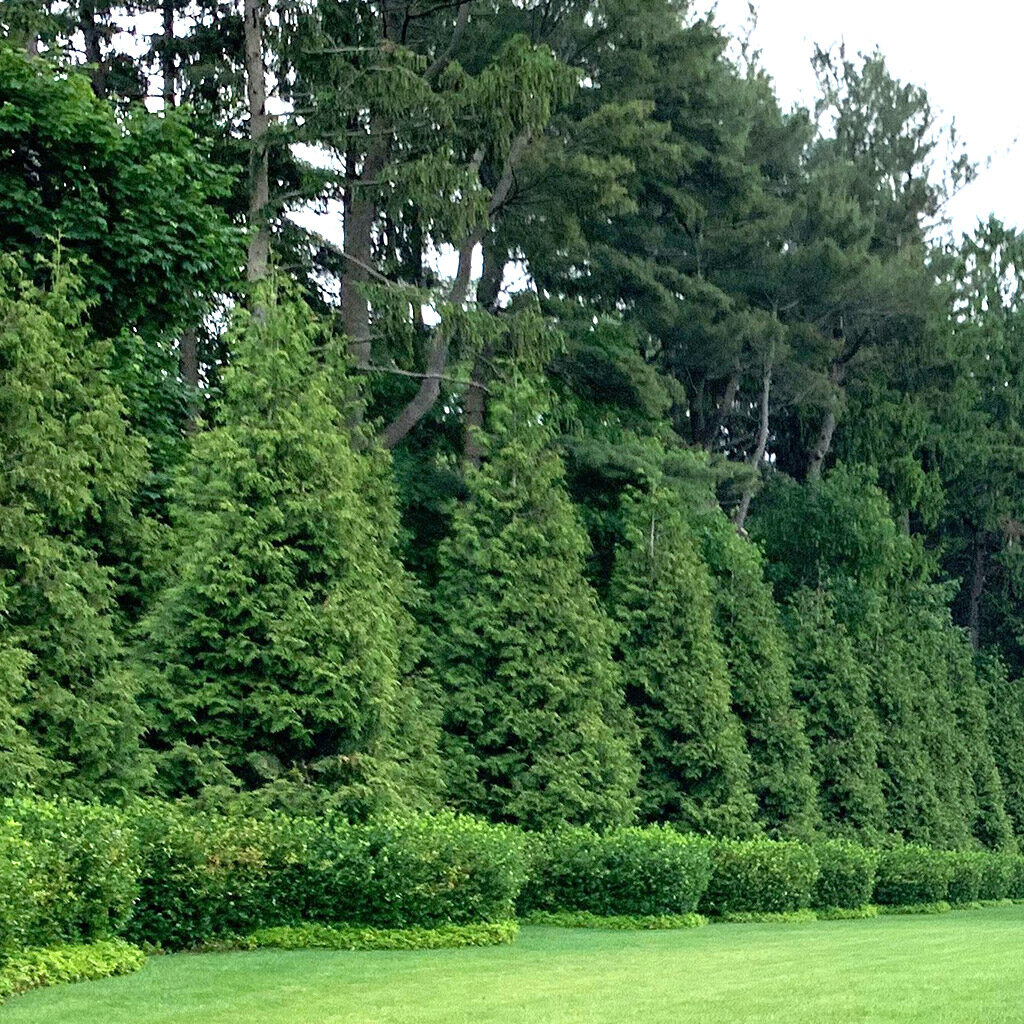Looking for some privacy from neighbors, buffers from wind or noise, or needed shade in the yard? Evergreen hedges can be functional (all of the above), graceful, and add value to your outdoor living spaces. Here are some of our favorite evergreen choices that are well-suited to Long Island.

Cryptomeria japonica — Japanese Cedar
Japanese cedar, a hardy, elegant evergreen, is ideal for screening purposes, or as a specimen or accent tree in the landscape. The needle-like growth is bright blue-green during the growing season, turning bronzy-green in winter. Pyramidal in shape, Japanese cedar can grow 12-24 inches a year and reach a height of 40+ feet. Cryptomerias are best planted in full sun, but will tolerate medium shade. Soil should be acidic with adequate moisture, yet well drained. Heavy, clay soils should be amended with organic matter—compost or composted manure—prior to planting. If you’ve been missing your hemlocks due to their ongoing insect infestation, Cryptomeria is considered an excellent replacement plant. And if you need another reason to plant, Japanese cedar is touted as being deer-resistant.

Ilex koehneana — Koehne Holly
Hollies make great hedges! The Koehne holly, a cross between Ilex aquifolium and Ilex latifolia, is prized for its dark green glossy leaves and densely branched growth habit. Hardy in zones 6-9 (we are considered zone 7), Koehne can ultimately grow to 20-25 feet tall and 12-15 feet wide if left alone. However, it can be easily pruned into an attractive and functional evergreen hedge. Best grown in full sun to part shade in fertile, moist, yet well-drained acidic soil (avoid soils that are slow-to-drain). And if you like to attract and provide food for the birds, red berries (drupes) appear in fall and winter months (on female plants). Koehne Holly is also reported to be deer-resistant.

Prunus laurocerasus ‘Schipkaensis’ — ‘Schip’ Laurel
‘Schip laurel,’ as it is commonly called, has grown in popularity as a hardy screening plant thanks to its dense form and ability to grow in shade. Prized for their dark glossy green leaves, Schips can grow to 10-12 feet tall by 4-6 feet wide. For best growth, provide rich organic soil that is moist but well drained. Clay soils should be amended with organic matter—compost or composted manure—prior to planting. Avoid soils that are slow to drain or frequently wet. Schips will produce flowers in late spring and blackish purple berries in early fall, making it a great plant for attracting wildlife in the landscape. Avoid planting in open, windy or exposed sites due to its tendency to wind burn. Periods of seasonal droughts can be problematic. And if your landscape is bothered by deer browsing, it’s touted as being resistant.
Thuja occidentalis — Eastern Arborvitae
Eastern arborvitae is a narrow growing evergreen suitable for landscapes that have limited room to work with. Selected varieties of ‘Arbs,’ as they are often called, can reach heights of 10-15 feet tall but only 4-5 feet in width. Two popular varieties, ‘Emerald Green’—preferred for its narrow growth habit, or ‘Elegantissima’—favored for its wider growth habit, are good choices. Eastern arborvitae leaves are scale-like and green in color. Arbs are best planted in sunny locations where the soil is moist, yet well-drained. Adaptable, they can tolerate standing water, and higher pH and clay soils. Once established, this plant can become heat and drought tolerant. Arbs are considered low maintenance and cost friendly.
Thuja plicata — Western Arborvitae
Although wider than the Eastern Arborvitae, Western ‘arbs’ are another great choice for limited spaces when used as a specimen or hedge. Pyramidal-shaped, this hardy evergreen tree can reach heights of 50+ feet tall with widths of 10-25 feet. (If needed, pruning can be done annually to control the width of western arborvitae.) The leaves are dark glossy green with a faint white streaking on the underside. Many cultivars of western arborvitae exist with varying growth rates and ultimate sizes. Plant in full sun or partial shade where the soil is moist, yet well-drained. Western Arborvitae is reported to be deer-resistant.

Thuja ‘Green Giant’ — Green Giant Arborvitae
Gaining in popularity in evergreen screening choices, Thuja ‘Green Giant’ is a hybrid cultivar of Thuja plicata and T. standishii. Its dense, pyramidal growth habit and scale-like dark green foliage makes this an ideal choice as a hedge or specimen in the home landscape. ‘Green Giant,’ hardy in zones 5-8, grows best in full sun to part shade locations where the soil is moist, fertile, and well-drained. This ‘fast’ grower can grow 40-60 feet tall and 12-18 feet wide. Thuja ‘Green Giant’ is a great substitute for Leyland cypress. And if your landscape is bothered by deer browsing, it’s touted as being resistant.
